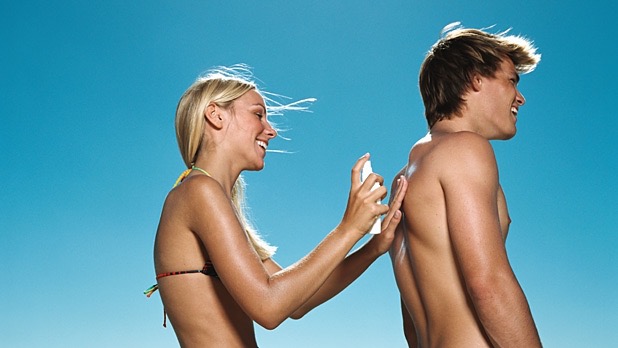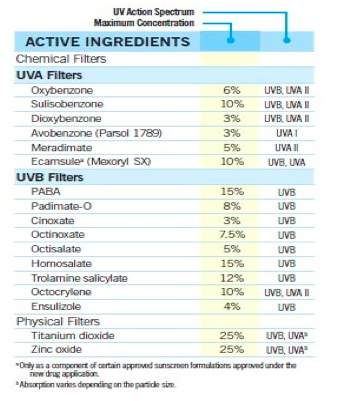ABOUT SPF
A new standard for sunscreens sold in Australia became effective in November 2012. This standard saw the maximum sun protection factor increased from 30+ -50+. The change specifically affected the level of UVA protection for new formulas, bringing it inline with the rest of the world where labeling SPF 50+ is already used. The increase in the UVA protection within the sunscreen allows for the sunscreen to be labeled as broad spectrum.
There may be confusion around the level of protection SPF 50+ can offer and should not be overestimated. It is wrongly assumed a significant increase in the protection SPF 50+ can offer when compared to SPF 30+. This increase and offers only marginally more protection, screening 98.3 % of the suns damaging rays when compared to 96.7% for SPF 30. (1) Osterwalder et al argues that it’s not the filtering of these harmful rays, rather the amount of rays allowed to be transmitted through the skin.A higher SPF allows fewer rays to be transmitted.(5) Regardless of the level of protection and water resistance, suncreens should be reapplied liberally every two hours or after swimming despite being labeled “4hr waterproof or sweatproof”.
It must be emphasised that sunscreen alone is not adequate protection. The wearing of sunscreen, hats, SPF rated clothing and seeking shade in the hottest part of the day will offer optimal protection. Laundry additives may also be washed into fabrics for added protection from the sun.
Some of the ingredients commonly used in sunscreen:
Absorbers create a chemical reaction in the skin to filter UV rays
Homosalate is an inorganic compound and an ester derived from salicylic acid. The salicylic portion of the molecule absorbs UV rays in the 295mn-315nm providing sun protection.(6)
Octisilate, octyl salicylate is an organic compound derived from salicylic acid It is an ester formed from the condensation of salicylic acid and 2-ethylhexanol. A colourless oily liquid is formed giving water resistant qualities.(6)
Octinoxate oxtyl methoxycinnamate,octocrylene oxybenzone or avobenzone(parsol 1789) is an ester formed from methtoxycinnamic acid,is insoluble in water and used in lip balms,absorbs UVB rays (6)
PABA para-aminobenzoic acid (UV Filter) refined into padimate A padimate O.
Padimate A-organic compound absorbing UV light,withdrawn from the market in Europe in 1989.It’s structure and behaviour resembles an industrial free radical generator.(6)
Padimate O-organic compound 2-ethylhexyl 4-dimethylaminobenzoate, Escalol 507, octyldimethyl PABA, and OD-PABA.suggestions that PadimateO may be carcinogenic but studies with hairless mice have demonstrated no carcinogenic detected.(6)
Retinyl Palmitate is derived from Vit A and is sometimes used to reduce the signs of aging, however it is not a UV filter and there is argument suggesting a link between retinyl palmitate and skin cancer. (6)
Reflectors or Physical sunscreens create a physical barrier on the skin
Titanium dioxide- naturally occurring mineral, oxide of titanium, used in foods, cosmetics, fibres ,inks, rubber and is also contained in red coloured sweets.
zinc oxide- inorganic compound occurring naturally as the mineral zincite but most zinc is produced synthetically. Widely used in the production of glass, paints, ointments, adhesives, pigments, fire retardants and foods.
People who find chemical sunscreens irritating might prefer to use the mineral forms.
Most sunscreens labeled broad spectrum contain a combination of both.
Nano particles and sunscreen
The Therapeutic Goods Administration conducted a “Literature review on the safety of titanium dioxide and zinc oxide nanoparticles in sunscreens” in August 2013.
The findings after using both animal and human skin have shown that the skin does not absorb nano particles and penetration is limited to the stratum corneum.
On current evidence titanium dioxide and zinc oxide are non toxic when used as ingredients in sunscreens due to their inability to reach viable cells in the dermis. The study also showed that absorption and penetration through compromised skin was commensurate with healthy skin.
Absorption into hair follicles also provided limited penetration with only trace amounts being found in the upper part of the hair follicle and no NP’s in the epithelium of the hair follicle.(2)
People who find chemical sunscreens irritating might prefer to use these mineral forms.
Which sunscreen is the best sunscreen?
Choose a sunscreen:
-
A broad spectrum that filters both UVA and UVB rays so preferably one that includes both a chemical and physical barrier.
-
With a higher than SPF 30.
-
Which is specific to your needs eg swimming then a water resistant protection.
-
Consistency that you are comfortable wearing, so perhaps patch test a few that suit your skin type. When patch testing use a small area of skin exposing it to the sun and If an irritation occurs discontinue use.
-
Check expiration dates and discard if they have expired.
Understanding the terms:

UVA
Ultra violet long wave radiation(320-400nm) although less intense are far more prevelant than UVB rays and account for up to 95% of radiation reaching the earths surface. UVA has long been known to contribute to photoaging and until recently UVA has been underestimated in it’s contribution to causing skin cancer but scientists now believe UVA damages the keratinocytes in the basal layer in the epidermis where most skin cancers are formed.(4)
UVB
Shorter wave radiation (280-320nm) and is responsible for the burn and reddening of the skin leading to damage in the uppermost part of the epidermis. UVB contributes to the formation of skin cancers and photoaging. UVA radiation remains constant whereas UVB is more intense in the summer months and between the hours of 10.00 am-2.00 pm in the afternoon and summer months. (5)
Water proof
The new standard has seen sunscreens no longer being able to be labeled waterproof, being replaced with ‘water resistant ‘or’ sweat resistant’.
SPF
Sun protection factor is the level of protection the sunscreen offers. The rule of thumb is if your are able to be exposed to the sun for 15mins before burning occurs then a sunscreen with a factor 10 would allow your skin to resist burning for 150 mins
+ Sign- means a sunscreen labeled SPF30+ must have a factor 30 or above.
Nano particles
They are smaller than human cells, with some being approximately the same size as important biological molecules
Nanoparticles are smaller than 100 nanometres and are invisible to the naked eye, is a nanometer is 0.000001 of a millimetre (3)
(1) Preventing skin cancer Tuesday,21st January 2014,accessed 9th May 2014, http://www.cancer.org.au/preventing-cancer/sun-protection/preventing-skin-cancer
(2) Literature review on the safety of titanium dioxide and zinc oxide nanoparticles in sunscreens V1.0 August 2013
(3) CSRIO Sunscreens, accessed 9th May 2014,http://www.csiro.au/en/Portals/Publications/Brochures–Fact-Sheets/sunscreens-FAQ.aspx
(4) www.skincancer.org/prevention/sun-protection/sunscreen/sunscreens-safe-and-effective
(5) Sunsreening Agents: A Review, January 21,2013,accessed 9th May 2014, http://www.jcadonline.com/sunscreening-agents-a-review/
(6) Zinc and Titanium Oxide 2014,accessed 9th May 2014, En.wikipedia.org/
Cancer Council Helpline 13 11 20
Information and support for you and your family for the cost of a local call anywhere in Australia.
Contact TGA: [email protected]







